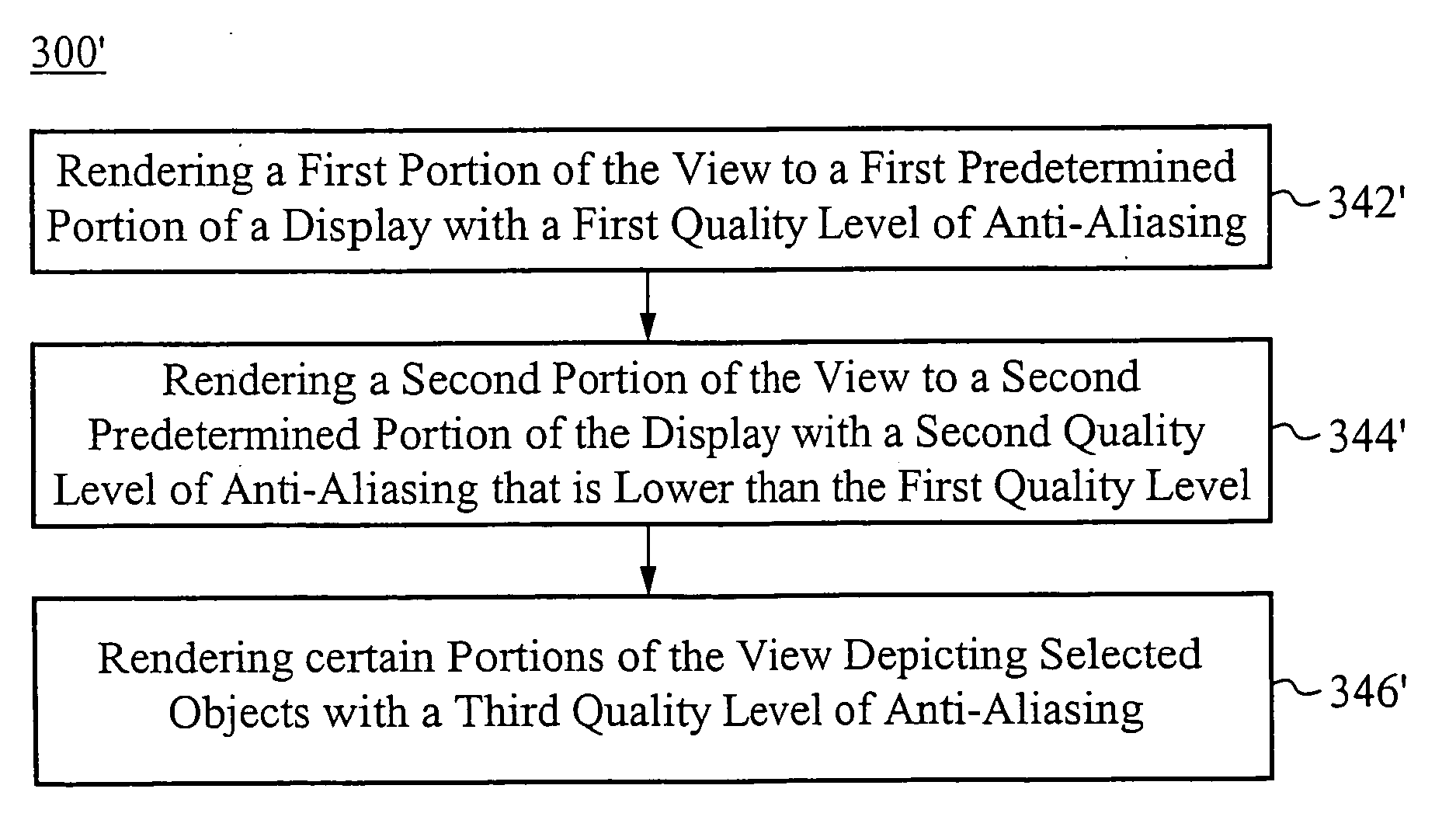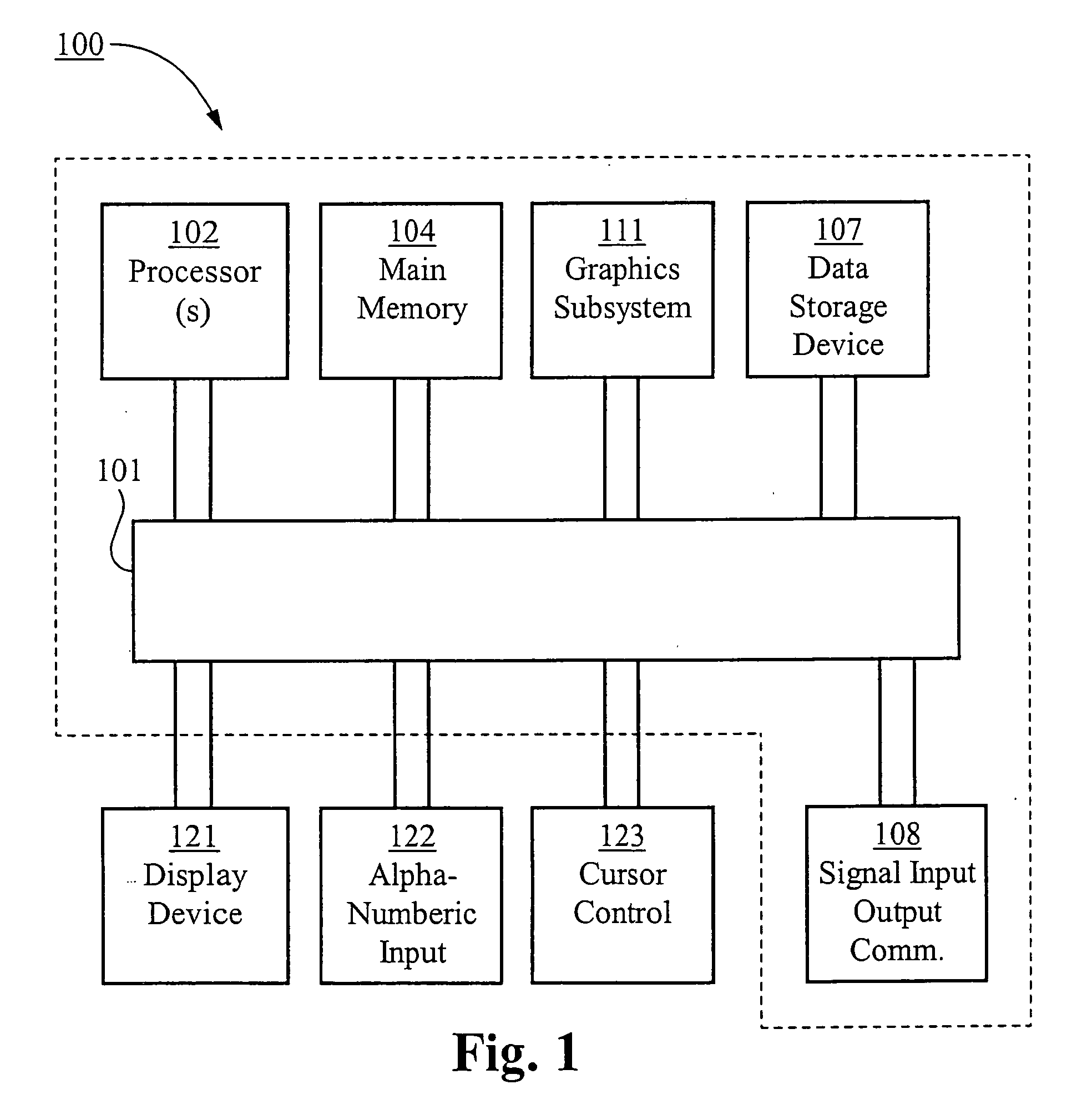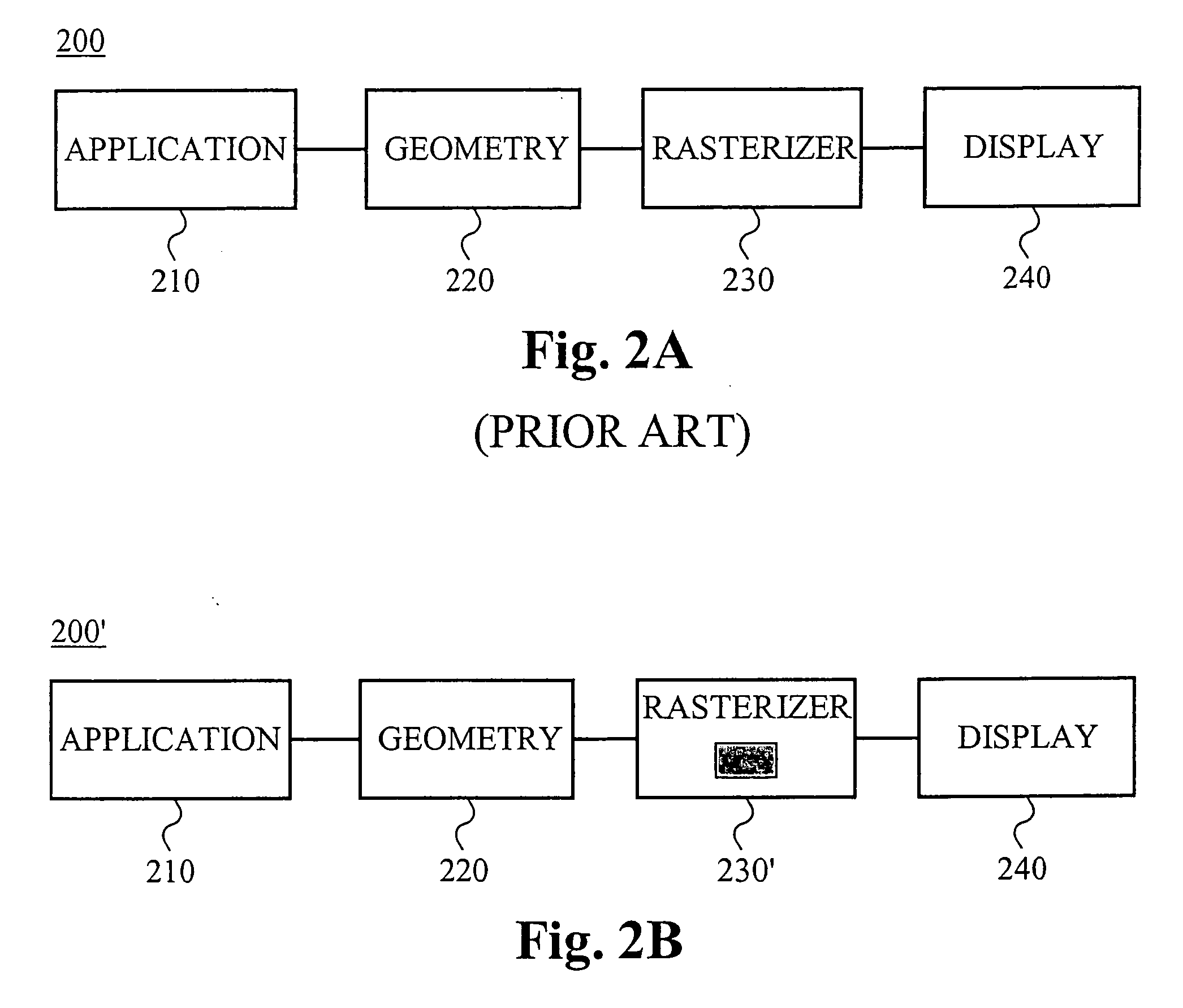[0017] In another embodiment, a more detailed method of processing data that includes a plurality of primitives for display is presented. This method comprises the steps of: determining an object quality metric for a primitive; converting the primitive into at least one fragment and associating each fragment with a pixel and an associated tile region of a display; determining a tile quality level for the associated tile region from the object quality metric and a tile quality capability table; and performing a first anti-aliasing operation on the fragment, wherein the first anti-aliasing operation has a quality level based on the tile quality level of the associated tile region.
[0018] Yet another embodiment of the present invention includes a method for dynamically displaying a changing scene on a display comprising a plurality of regions. This method comprises the steps of: assigning a first subgroup of regions a first quality capability; assigning a second subgroup of regions a second quality capability; assigning an object quality metric to an object of the scene; and performing a display operation. The display operation includes the steps of: associating the object with one or more subgroups of regions; assigning a first quality level to any object-associated region within the first subgroup, wherein the first quality level depends on the object quality metric and the first quality capability; and performing a first anti-aliasing operation in every region with the first quality level. The display operation preferably includes the further steps of assigning a second quality level to any object-associated region within the second subgroup, wherein the second quality level depends on the object quality metric and the second quality capability, performing a second anti-aliasing operation in every region with the second quality level; and displaying the scene. The regions can comprise sub-regions, which can be displayed independently with differing levels of anti-aliasing quality.
[0019] Typically, everything within an object-associated region assigned a quality level for a frame is displayed with its assigned quality level during the frame in which that quality level is displayed. Preferably, quality levels are recalculated for each frame. Though the assigned quality levels preferably depend on the quality metric and quality capability, some embodiments relax this dependency to allow for temporal dithering.
[0020] The disclosure also relates to systems and devices for processing and displaying images, for example, a system for processing data that includes a plurality of primitives for display. In one embodiment a system comprises a primitive processor configured to receive a primitive and associate it with an object quality metric; a scan converter configured to receive the primitive and the object quality metric from the primitive processor, to convert the primitive into at least one fragment, and to associate a first fragment with a first pixel and a first tile region; a tile quality capability processor configured to receive the object quality metric and a first tile parameter representing the first tile region from the scan converter, and to determine a first tile quality level for the first tile region based on a tile quality capability of the first tile and on the object quality metric; and a fragment processor configured to receive the first fragment from the scan converter and to receive the first tile quality level from the tile quality processor, and to perform a first anti-aliasing operation on the fragment, wherein the first anti-aliasing operation has a quality level based on the first tile quality level.
[0021] In another embodiment, the present invention relates to a graphics processing unit, comprising: a host interface configured to receive data from a host device; a geometry device configured to receive data from the host interface, to use the data to form a plurality primitives, and to assign a quality metric to each primitive; a rasterizer device configured to receive a first primitive from the geometry device, to generate at least one fragment, comprising a plurality of pixels, based on the first primitive, to assign each fragment a fragment quality level based at least in part on the quality metric of the first primitive, and to perform a first anti-aliasing operation on each fragment, wherein the first anti-aliasing operation has a quality level based on the fragment quality level; a frame buffer device configured to assist the rasterizer device in performing anti-aliasing operations; and a display interface configured to receive the pixels of each fragment from the rasterizer device and to send the pixels to a display.
[0022] Though the quality level of anti-aliasing is based on the fragment quality level, the dependence need not be of any particular form. Preferably, the dependence is implemented as a series of thresholds.
 Login to View More
Login to View More  Login to View More
Login to View More 


